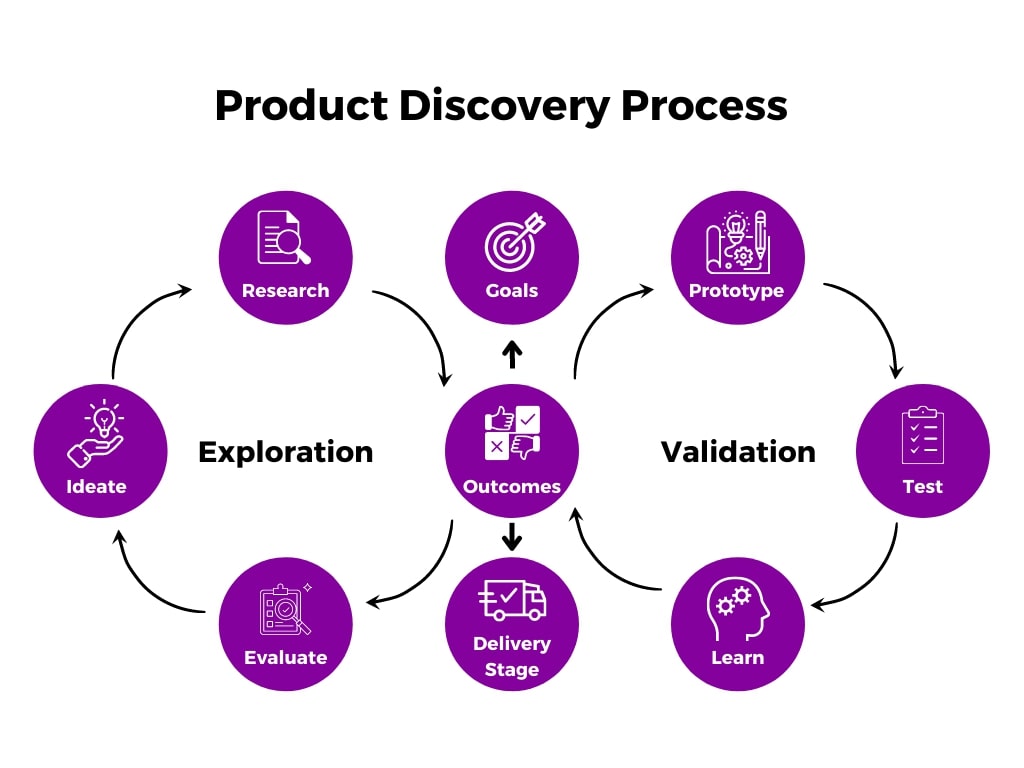Adopting A Continuous Discovery Process For Building Great Products
-
Bella Williams
- 10 min read

Continuous discovery process involves constantly learning about user needs and opportunities through various research activities such as user interviews and usability testing. The goal of continuous discovery is for product teams to have a tight feedback loop that enables the flow of insights to deliver on the best product experience for a user pain point, need or desire.
The product discovery process
The typical product discovery process starts with defining the domain or problem space (e.g e-commerce payments or ) you’re trying to solve a problem or set of problems in. The next step is to understand the user or customer segment you’re trying to solve these problems for. This helps the team focus the research on the right areas. You are essentially looking for opportunities to create value that users or businesses are willing to pay for.
Once the problem space and user segments are defined, the team then moves on to researching the customer needs and opportunities by carrying out various activities such as user interviews, surveys, usability tests, customer feedback sessions and market research to have a better understanding of the most important problems to solve and the best solutions to them.
The continuous discovery process
There isn’t a perfect process for doing continuous product discovery and it varies across teams, companies and industries but one main benefit of a continuous product discovery process is that it allows for a more agile approach to product development. By continuously gathering customer feedback and incorporating it into the product, product teams are able to quickly pivot and make changes to improve the product and better meet the needs of your customers.
This approach is especially useful in today’s fast-paced, technology-driven market which is constantly evolving meaning customer needs and preferences evolve quickly.
How to run product discovery continuously
The best teams are able to run product discovery in a continuous manner to build great products and continually improve them. These product teams continually search for new information about user needs, using research activities like weekly customer touch points and hypothesis testing, to uncover user and customer experience insights and user behaviour data.
Tools for continuous product discovery
It can be difficult to do continuous discovery without the right tools
In order to implement a successful continuous product discovery process, it is important to have a dedicated team in place. This team should consist of individuals with a variety of skill sets, including product managers, designers, and developers. The team should also have access to tools and resources that will help them gather and analyse customer feedback, such as user testing software and market research tools.
Once the team is in place, the continuous product discovery process can be broken down into a few key steps:
- Identify customer needs: The first step in the process is to identify the needs of your target customers. This can be done through market research, customer surveys, and other methods of gathering customer feedback.
- Generate ideas: Once you have a clear understanding of customer needs, the next step is to generate ideas for potential products or features. This can be done through brainstorming sessions, design thinking workshops, and other creative techniques.
- Test concepts: The next step is to test the viability of your ideas. This can be done through user testing, market validation, and other methods of gathering feedback from potential customers.
- Iterate and improve: Based on the feedback you receive, you can iterate on your ideas and make improvements to ensure that the product is as successful as possible. This may involve making changes to the product design, adding new features, or even scrapping an idea altogether and starting fresh.
By following these steps and continuously gathering customer feedback, you can develop a product that truly meets the needs of your customers and stands a better chance of success in the market. A continuous product discovery process allows for flexibility and adaptability, which is essential in today’s fast-paced business environment.
Benefits of continuous product discovery
Product discovery is an essential part of the product development process. It is the process of identifying customer needs, validating ideas, and testing concepts to ensure that the product will be successful in the market. A continuous product discovery process is one that is ongoing and iterative, allowing for flexibility and constant improvement.
Another advantage of a continuous product discovery process is that it can help reduce the risk of developing a product that fails in the market. By continuously testing and validating ideas, you can identify potential issues early on and make changes before investing too much time and resources into a concept that may not be successful. This can save your company time and money in the long run.







